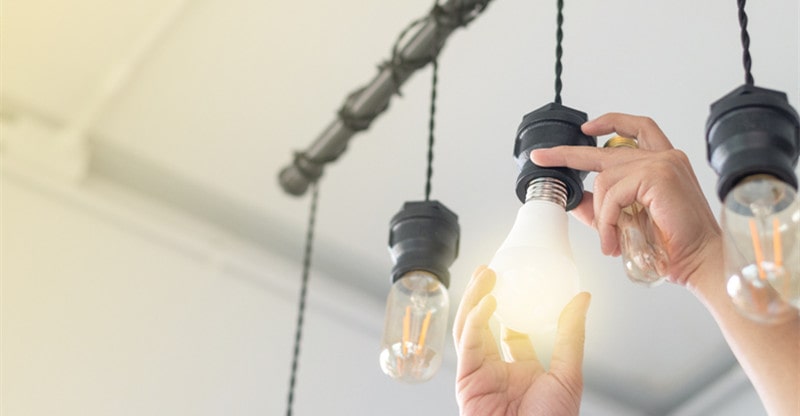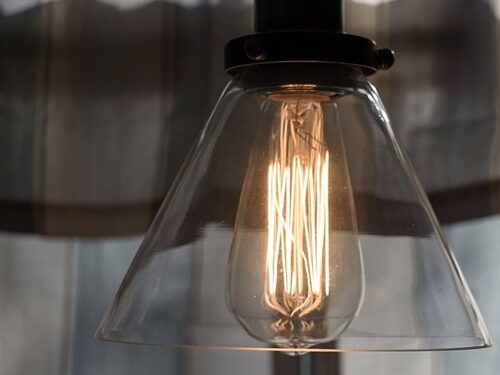Building a home is exciting but can also be a little scary. If you’re building from scratch or renovating, there are many supplies that you’ll need to secure.
Therefore, it’s crucial to have the right supplies before you start. But before you start anything, you have to remember that one of the foundations of any new home is its electrical system.
Essentials of Preparing Your Electrical Supplies
Electricity is essential to any home, so it’s vital to ensure that your home is adequately equipped with all the necessary electric supplies before you begin construction.
Without it, you will not be able to do much of anything.
So when you’re building a house, you want to ensure that your electrical system is up to par.
This guide will help determine what factors to consider before you go to an electric supply store when building a new home.
But before anything else, let’s discuss the importance of electric supplies.
Electric Supplies
Electric supplies are the components that make up an electric circuit.
These include wires, resistors, capacitors, and inductors. The purpose of these components is to allow electricity to flow through them.
They do this by isolating one part of a circuit from another, which allows electricity to flow through one element while preventing it from flowing through another.
You can’t just connect two wires and have electricity flow through them.
In addition, you need a power source, like a battery or another device with a generator. Then it would be best if you had something to complete the circuit by allowing electricity to flow from one end of the wire to the other.
So what are the things you have to consider about electricity when building a new home?

Outlet Location
First, ensure your home’s electrical system is up to code. This means that it can support all of your house’s electrical loads and any future additions that may come up.
You’ll want to ask an electrician about this if you’re unsure whether your electrical system meets code standards.
Second, it’s worth remembering that outlets should be near doorways and windows, so anyone in your family can easily reach them.
In addition, it’s essential to place them near any furniture that may need power nearby—this includes entertainment centres, bedside tables, and other appliances.
It can be a nightmare if you don’t have enough outlets in the right places. Then, you’ll have to unplug something and move it around whenever you want to use it, and that’s not just inconvenient—it’s downright troublesome.
So when building your new home, think about where your outlets will be. In addition, decide on how many of them there will be.
If you need more than two or three outlets in any given room, ensure there’s room for them before construction starts.
Wiring Systems
Wiring systems are one of the most important things to consider when building a new home.
If you don’t have adequate wiring, it can cause problems with your electrical system and even lead to fire hazards.
So, it would be best if you always had your wiring checked by a professional before you move into your new home, but here are some things to look out for:
First, the type of wiring system you choose is essential. There are three major types: copper, aluminium, and steel. Each has its pros and cons in terms of costs, lifespan and safety.
Copper is the most popular choice because it’s less expensive and lasts longer than steel or aluminium, but it can be dangerous if not correctly installed.
Aluminium wiring is cheaper than copper but doesn’t last as long, while steel wire is more expensive than either but has a longer lifespan than either material.
Second, your home’s electrical panel should be located in an accessible location within your home’s walls so that an electrician can easily access it in case there’s an emergency repair needed later on down the road, like when an appliance shorts out.
You should install your home’s electrical panel in a fireproof enclosure.
You can place electrical panels in the basement or garage of a home, but this can create a safety hazard if there’s ever an electrical fire because these areas have poor ventilation and are large enough that the smoke from the fire could spread throughout your entire home.
Advanced Wiring
If you’re building a new home, it’s essential to consider the wiring that you will install in the walls. This is especially true for homes with electric systems that you will use for power-hungry appliances like air conditioning and heaters.
The first step is to determine what type of wiring your house will use: standard or advanced.
Standard Wiring
The most common type of home wiring is called standard wiring. It’s also the most commonly used, and it’s the easiest to understand.
Standard wiring has two wires: a black wire and a white wire.
The black wire is the “hot” wire, which carries electricity from the breaker box to any device that uses electricity.
The white wire, called the “neutral” wire, carries electricity back to the breaker box once a device has used it.
It also has two types of devices. Some require both hot and neutral such as a lamp. On the other hand, some only need one of those two wires, such as a switch.
These devices are usually in pairs—one on each side of the wall—and they’re connected by twisting their corresponding black and white wires together with electrical tape or wire nuts.
You can use standard wiring if you want to install new lights or outlets around your home, but you should ensure that any other existing wires have been disconnected adequately before doing so.
Advanced Wiring
The first thing to know about advanced wiring is that it’s not a new technology or product but rather a combination of existing technologies and products that have been put together in a new way.
Advanced wiring uses the same essential components as traditional wiring systems: electrical boxes and wire connectors, switches and outlets, light fixtures, etc.
The difference is that advanced wiring uses these components in new ways to provide you with more options for how your home’s electricity works.
Advanced wiring systems are often easier to install than traditional ones because they don’t require additional work beyond what’s necessary for standard installation.
They also offer many more options for controlling lights from multiple locations around the house or setting up automated lighting schedules.
Energy-Efficiency
Energy is a big part of your home’s overall cost, so it’s crucial to ensure that your new home is energy-efficient.
Think about the heating and cooling system you’ll want in your new home.
For instance, consider installing radiant floor heating instead of baseboard heaters if you live in a cold climate. If you live in warm weather, go for a central air conditioner instead of relying on window units.
You can also look into energy-efficient appliances and lighting.
So, when purchasing appliances for your new home, consider whether they’re Energy Star certified. You can also consider installing solar panels on your house if it makes sense for your location and budget.
Another thing to consider when building a new home is insulation levels—if possible, get twice as much insulation as code requirements require. This will help keep your house cool in the summer and warm in the winter.
Custom Lighting Solutions
Custom lighting solutions are an essential part of the overall design of your new home.
Your lighting needs to be functional and should also provide a mood or feeling. For example, you want your home to be bright and cheerful in the morning, but you don’t want it to be too bright at night. Likewise, you want it to feel warm and cosy when you’re inside, but you don’t want it to be too dark.
There are many different options available, each with pros and cons.
One of the most common lighting solutions is incandescent bulbs. These are great if you’re looking for something that works well with dimmer switches, but they tend to be inefficient and produce a lot of heat, resulting in higher energy bills.
Another popular option is LED lighting. This bulb will last longer than other types, but it does cost more upfront.
The good news is that you’ll save money on your electricity bill over time because LEDs use less energy than incandescent bulbs, so this could be a good investment.
If you’re looking for something more eco-friendly, consider halogen bulbs or compact fluorescent light bulbs (CFLs).
Both options will help reduce your carbon footprint and save energy compared to other types of bulbs.
However halogen bulbs tend to burn out faster than CFLs, so they may not be as cost-effective over time (especially if you need replacement bulbs often).
Final Thoughts
When you’re building a new home, electricity is something that you should not overlook. It’s easy to assume that since you’re building a new home, everything will be fresh and up-to-date—but that’s not always the case.
Electricity is the lifeblood of your home, and if you don’t know what you’re doing when wiring it, you could end up with a house that’s unsafe for your family and inefficient—meaning you’ll have to spend more money than necessary.
So, when building your dream home, it’s essential to ensure that your electrical system is adequate for your needs.
It would be best to check with an expert if you have any questions.





